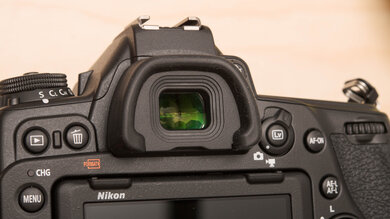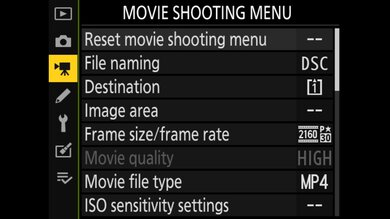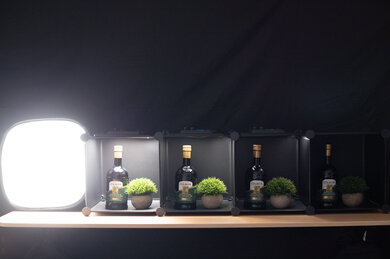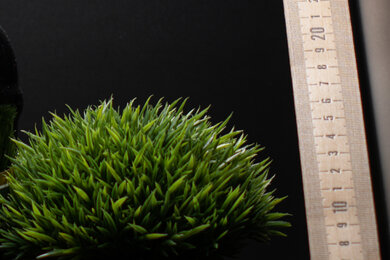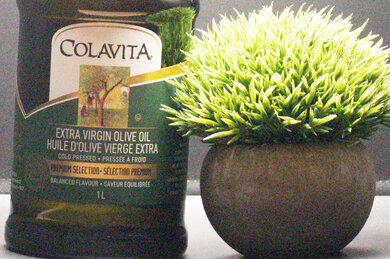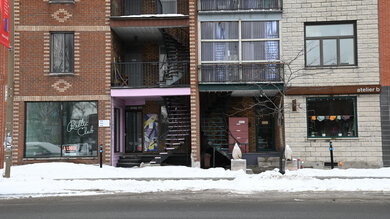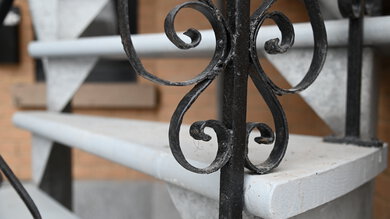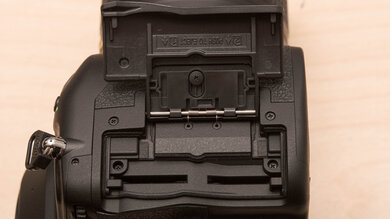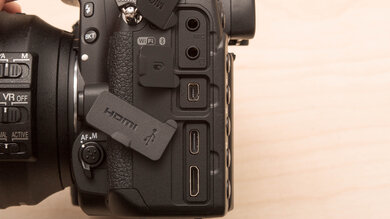The Nikon D780 replaces the popular Nikon D750 DSLR with key improvements in autofocus, battery life, and high ISO performance, along with added 4k video capability and a touchscreen. Its hybrid autofocus system gives you the best of DSLR technology through the viewfinder while borrowing the on-sensor phase-detection autofocus system from the mirrorless Nikon Z 6 when shooting in Live View. It isn't the most portable camera, but its robust build quality makes it a great workhorse that can put up with extensive use, and its 24.5-megapixel full-frame sensor ensures high-quality images in all kinds of lighting conditions. Sitting above the mid-range Nikon D7500 and below the pro-grade Nikon D850, this is an excellent option for enthusiasts who want the best that DSLRs have to offer.
Our Verdict
The Nikon D780 is good for travel photography, though it isn't very portable. Despite its bulky size and heavy weight, it's very comfortable to shoot with. It also delivers amazing overall image quality, with a broad dynamic range and fantastic noise handling capability even at high ISO levels, which is great for nighttime photography. Its wide shutter speed range allows you to capture still frames of fast-moving subjects or take long-exposure photos, while its autofocus system is versatile and reliable. It has an incredibly long battery life to get you through long days on the go.
- Excellent image quality.
- Superb autofocus performance on photography.
- Long battery life.
- Sturdy-feeling weather-sealed construction.
- Bulky and heavy design.
The Nikon D780 is great for landscape photography. Image quality is excellent, with a broad dynamic range and very little noise as you step up the ISO, so it's well-suited to shooting nighttime or low-light landscapes. It also feels very well-built with a robust, weather-sealed body. Its tilting screen is bright enough to be legible even under direct sunlight. Unfortunately, while it's comfortable to hold, it's very bulky, making it a hassle to bring to remote shooting locations.
- Excellent image quality.
- Long battery life.
- Sturdy-feeling weather-sealed construction.
- Tilting screen is bright.
- Fantastic dynamic range.
- Bulky and heavy design.
The Nikon D780 is a great option for sports and wildlife photography. While its max burst rate isn't especially quick, it has an extremely fast max shutter speed and a reliable autofocus system that makes it easy to capture photos of fast-moving subjects. Also, its very short buffer clearing time lets you fire off long continuous bursts without extended interruptions. Image quality is also excellent, and the camera feels comfortable to use and very sturdy. It doesn't have in-body image stabilization, meaning you'll have to rely on optically stabilized lenses when shooting in low light at slower shutter speeds.
- Excellent image quality.
- Superb autofocus performance on photography.
- Long battery life.
- High maximum shutter speed.
- Short photo buffer clearing time.
- Bulky and heavy design.
The Nikon D780 isn't meant for vlogging. It's very big and bulky, making it a challenge to carry around for extended periods. The screen also only tilts and doesn't rotate, meaning you can't see the monitor when the camera's facing you. It also lacks in-body image stabilization, so it can struggle to eliminate camera shake. That said, video quality in 4k and 1080p is good overall, and its autofocus system does a pretty good job tracking faces.
- Good overall recording quality.
- Can shoot in 4k without a crop.
- Poor video stabilization performance in 4k.
- Bulky and heavy design.
- Screen only tilts and doesn't fully rotate.
The Nikon D780 is great for studio video work. Video quality in both 1080p and 4k is good, with sharply rendered object contours and surfaces and fairly low levels of noise even in dark environments. It features a wide selection of ports and inputs for videography accessories, with microphone and headphone jacks and a clean HDMI output for using an external recorder without any overlays. Its N-Log shooting mode also helps preserve the camera's high dynamic range while recording. Its autofocus system does a pretty good job of acquiring and maintaining focus on moving objects and faces.
- Long battery life.
- Good overall recording quality.
- Can shoot in 4k without a crop.
- Wide selection of inputs and outputs.
- Easy to use menu system.
- Incapable of shooting 4k video at more than 30 fps.
The Nikon D780 isn't designed for action video. It's far too big to mount onto a chest or helmet rig. Its video stabilization performance in 4k is sub-par, but it performs decently well while shooting 1080p footage. It can't shoot 4k video at more than 30 fps, but it supports 120 fps recording in 1080p, which is great for smooth action videos or generating slow-motion clips. It also feels well-built and is rated as being weather-sealed.
- Good overall recording quality.
- Can shoot in 4k without a crop.
- Poor video stabilization performance in 4k.
- Incapable of shooting 4k video at more than 30 fps.
- Bulky and heavy design.
The Nikon D780 has excellent RAW photo performance. It does an amazing job of managing noise, with a dual-gain sensor that captures very clean files in low light. It also has incredible dynamic range, preserving plenty of detail in high-contrast scenes. Images also look sharp and detailed, with a bit of leeway to crop in, thanks to its high-resolution sensor.
- Fantastic dynamic range.
- Excellent noise handling in low light.
- High-resolution sensor.
Performance Usages
Changelog
- Updated Feb 24, 2025: We've converted this review to Test Bench 0.13. We've added new tests for Video Dynamic Range and Luminosity Patch Detection. You can learn more about these updates in the changelog.
-
Updated Jan 10, 2025:
We've added a comparison to the newly reviewed Nikon D850 in the Sensor box.
- Updated Jan 29, 2024: Added text to the 'Raw Photo Performance' verdict box.
- Updated Jan 29, 2024: Converted to Test Bench 0.12.1.
Check Price
Differences Between Sizes And Variants
The Nikon D780 is only available in 'Black', and you can see our unit's label here. You can buy it in a bundle with the Nikkor 24-120mm f/4G ED VR lens, though it's compatible with other F-mount lenses. You can also buy it without a lens.
If you come across a different variant, let us know in the discussions, and we'll update our review.
Popular Camera Comparisons
The Nikon D780 is a fantastic enthusiast-oriented DSLR. With its hybrid autofocus system and dense feature set, it combines the best of both the mirrorless and DSLR worlds, making it suitable for lots of photography styles. It isn't ideal for filmmaking or run-and-gun video since it can only shoot 8-bit video internally, lacks in-body image stabilization, and is quite heavy and bulky.
It improves upon its predecessor, the Nikon D750, in a few ways. It has a new backside-illuminated (BSI) sensor to help improve the light gathering of the sensor's pixels and a wider ISO range. It has a faster max shutter speed (1/8000s vs. 1/4000s), a slightly faster max continuous shooting speed (7 fps vs. 6.5 fps), and 4k video capability, along with a better battery and a higher-resolution screen that now has touch capability. Unless you need to shoot 4k video, however, the differences probably aren't worth the upgrade if you already own the D750.
For more options, check out our recommendations for the best cameras for photography, the best DSLR cameras, and the best cameras.
The Nikon D850 is better overall for photography than the Nikon D780, with a higher-resolution sensor that captures more fine detail and gives you more room to crop your images. The D780, on the other hand, is the better option if you're looking for a high-end DSLR that's better for video, as it has a more reliable Live View autofocus system and slightly more advanced specs, like 10-bit external video output via HDMI.
The Sony α7 III and the Nikon D780 are both enthusiast-oriented full-frame cameras, but they're different camera types. The Sony is a mirrorless camera with an electronic viewfinder that lets you see changes to exposure directly through the finder, while the Nikon is a DSLR with an optical viewfinder that gives you a lag-free, unfiltered view through the lens. The Sony is lighter and more portable and has a more reliable overall autofocus system. However, the Nikon has a longer battery life and a more intuitive menu system and controls.
The Nikon D780 is better overall than the Nikon Z 5, though they use different camera technologies. Though both are full-frame cameras, the D780 is an enthusiast-level DSLR, so it has an optical viewfinder, while the Z 5 is an entry-level mirrorless camera with an electronic viewfinder. Both feel well-built and comfortable to shoot with, but the Z 5 is significantly lighter and more portable. The D780 has a longer battery life and a more versatile autofocus system since it uses both contrast- and phase-detection AF depending on whether you shoot through the viewfinder or Live View on the screen. The Z 5 can only shoot 4k video with a severe crop, but on the upside, it has in-body image stabilization, meaning you can use non-optically stabilized lenses.
The Nikon D780 is better overall than the Canon EOS 6D Mark II. Both are full-frame DSLRs that can take high-quality images, but the Nikon is a higher-end camera aimed at more advanced shooters. It has a faster max burst rate and a more effective autofocus system, which borrows from the mirrorless Nikon Z 6 when shooting in Live View, giving you more versatility for different shooting situations. Unlike the Canon, the Nikon can also record 4k video and offers more frame rate options in 1080p, including 120 fps for slow-motion footage. The Nikon is slightly heavier and bulkier than the Canon, although it has a longer battery life.
Test Results

The Nikon D780 isn't very portable. It's heavy and bulky, making it harder to carry around for long periods, although it still feels well-balanced with its kit lens attached. If you'd prefer a more portable full-frame camera, consider a mirrorless option like the Sony α7 IV.
The camera body is made of magnesium alloy and carbon fiber, and it feels excellently constructed. The buttons feel solid and give decent physical feedback. The tilting mechanism of the screen also feels sturdy. A secure locking door covers the SD card and battery compartment, while rubber flaps cover the inputs and outputs. The camera is also weather-sealed against elements like moisture and dust, giving you some added protection when shooting in more adverse weather conditions.
This camera has several customizable buttons, including two custom shooting modes on the mode dial. You can also remap many existing functions to suit your preferences.
The Nikon D780 feels very comfortable to shoot with. It's suitable for all hand sizes, and its large handgrip and rubberized thumb rest make it easy to maintain a secure hold on the camera. The eyecup around the viewfinder feels comfortable, and you can easily change settings with either eye to the viewfinder thanks to its many physical controls and intuitive button layout. The camera's heavy weight and size also make it a bit cumbersome to carry around, especially if your hands are on the smaller side.
The Nikon D780 has a large, tilting screen, which lets you quickly and easily take shots from lower angles. The screen is very bright, enough to overcome glare on sunny days, and its high resolution gives you a clear view of whatever you're shooting. It has full touch capability, meaning you can use it to navigate the menu and select focus points or take a picture when the 'Touch AF' or 'Touch Shutter' settings are enabled.
The menu system is fantastic, similar to other Nikon cameras like the Nikon Z 6II. Although there are a lot of settings, and it can be hard to find some of the more advanced camera functions, the menu is clearly organized and easy to navigate with either the touchscreen or the directional pad. It has lots of customization options and a quick menu to quickly access commonly used settings.
If you're looking for a camera with a higher-resolution sensor, check out the Nikon D850.
Battery life is fantastic. You can easily go multiple days of shooting without recharging the battery, depending on how often you shoot and how you use it. Recording a lot of video, for instance, drains it faster, but it still lasts a decently long time for continuous video recording. It also supports USB charging while in use, so you can bring a portable battery pack for longer video recording sessions.
The Nikon D780 has a fairly large buffer, especially for RAW photos, and thankfully, it clears its buffer very quickly, so you can get back to shooting should you fill the buffer up. It can shoot at a fairly quick continuous shooting speed with its mechanical shutter. Though it isn't the fastest burst rate out there, it's still suitable for reasonably quick subjects. It also shoots at up to 12 fps when using 12-bit electronic shutter mode. E-shutters can distort very fast-moving subjects, but this mode is helpful if you want to shoot silently.
The Nikon D780 has a hybrid autofocus system. When shooting through the viewfinder, it uses the same advanced Multi-CAM 3500FX II cross-type autofocus system found on the Nikon D750, with algorithms borrowed from the Nikon D5. This mode gives you a smaller focus area with 51 AF points clustered in the center of the frame. When shooting through the screen in Live View, it uses an on-sensor phase-detection AF system borrowed from the Nikon Z 6. This mode has 273 AF points across a much wider coverage area, letting you track moving subjects closer to the edges of the frame.
The camera supports face and eye detection and lets you quickly switch between faces when multiple are detected in the frame. Through the viewfinder, the camera uses Nikon's '3D Tracking', which uses predictive algorithms to automatically track subjects after you've locked onto them. In Live View, it uses a slightly different subject tracking feature that you have to engage by pressing the 'OK' button before half-pressing the shutter to lock onto your subject. The camera has a touch tracking feature that lets you select the subject by touching the screen, although we found touch tracking to be fairly unreliable.
The results shown here are those we achieved when using the viewfinder, since it resulted in more keepers than in Live View mode, though the camera's performance will vary depending on your shooting conditions, subject, and lens. Overall, the camera does an okay job of tracking moving objects and faces, but it still sometimes can't quite keep up with faster or more erratic subjects, though most shots are still usable.
If you prefer to disable tracking and use a single focus point, the AF is very reliable. The camera can quickly achieve focus on subjects in the focus point, which is great for subjects that are moving more slowly or in a predictable pattern.
The Nikon D780 doesn't have in-body image stabilization, but you can use optically stabilized lenses like the Nikkor 24-120mm f/4G ED VR kit lens. The 'VR' stands for 'Vibration Reduction', which is Nikon's term for image stabilization. Though it doesn't have IBIS, this camera does have an electronic stabilization feature for added stability. Combining electronic stabilization with optical stabilization does a fantastic job of reducing camera shake, meaning you can take handheld shots at very slow shutter speeds.
The Nikon D780 has fantastic dynamic range. It has a very wide usable dynamic range at its base ISO, allowing you to capture a broader range of highlight and shadow detail in a single shot. The camera has really good noise handling and exposure latitude, so you can adjust the exposure of a shot a fair amount before getting much visual noise.
The camera's sensor has a fairly high resolution, meaning it can resolve fine detail very well. Even when punching in, you can make out fine textures and detail.
The Nikon D780 has excellent RAW noise handling thanks to its dual-gain sensor. These types of sensors have two different readout modes for lower and higher ISOs. Above a certain ISO, the sensor uses more gain at the expense of dynamic range to reduce noise. Compared to a camera without dual-gain technology, like the Nikon Z 5, we can see that RAW files have even better noise performance at higher ISO levels, allowing you to shoot in low light with minimal noise.
The Nikon D780 supports Log shooting in N-Log format, allowing you to capture a wider usable dynamic range. It can also record in 10-bit color depth over HDMI, which allows the camera to capture more color information and gives you more room to play around with the look of your videos in post-production.
The Nikon D780 can shoot 4k video up to 30 fps, which is good for capturing more cinematic or natural-looking video.
The Nikon D780 has good internal recording capability in 4k. It has a pretty standard 30-minute recording time limit, meaning you can capture fairly long takes, but it's not good for long continuous recording. Thankfully, the camera doesn't overheat or shut down while recording for long periods. That said, it's limited to 8-bit 4:2:0 color internally, so if you want to record in 10-bit to capture more color information and have more leeway when editing your footage, you'll need to connect an external recorder over HDMI.
Autofocus performance is decent when recording 4k video. When shooting video, it uses a 273-point phase-detect AF system over Live View, which does a decent job tracking moving objects, although there can be a bit of a delay when the subject moves before the camera finds it again. Unfortunately, the camera doesn't support eye tracking in video mode, but it still tracks faces and does a great job overall at keeping moving human subjects in focus.
Video quality is excellent in 4k. Videos look crisp and detailed, with colors that pop. It also does a great job in low light, with minimal noise in dark parts of the image. You can see a fair amount of detail in the shadows, although finer details, like the texture of the walls or tire tracks on the floor of the parking garage, can get flattened or lost.
Unfortunately, there's significant rolling shutter effect in 4k. It's especially noticeable when panning the camera at faster speeds, causing severe skewing with vertical lines and objects.
The Nikon D780 can record 1080p video up to 120 fps, which is fantastic if you want to incorporate slow-motion footage into your videos.
This camera has good internal recording capability in 1080p. As with 4k, it has a 30-minute recording time limit, meaning you can record fairly long takes. However, it's limited to 8-bit 4:2:0 recording internally, so there's a limited amount of color information it can record, giving you less latitude when editing your footage.
In 1080p, autofocus performance is decent. When shooting video, it uses a 273-point phase-detect AF system over Live View. Overall, it performs similarly to how it does in 4k, with quick and accurate focusing, but it can sometimes take a moment to find its target again after it's moved. Unfortunately, eye tracking isn't available in video mode.
1080p video quality is good. It looks good in more controlled lighting, with a sharp image and vibrant colors. It's still good in low light, though it struggles a bit more than in 4k to bring out shadow detail. Thankfully, there isn't too much noise or pixelation.
There's much less rolling shutter effect when shooting in 1080p. Though there's still some distortion, it's hardly noticeable except when moving the camera very quickly, so it isn't especially distracting.
The Nikon D780 has two SD card slots rated for higher-speed UHS-II cards. This is great for pros who don't want to run out of storage while in the middle of a shoot or those who shoot a lot and want to have a running backup on the go. They're well-placed on the side of the camera, too, so you can easily switch out cards when using a tripod.
The camera has a wide array of inputs and outputs. There's a Mini HDMI port to connect to an external display or recorder for more involved video projects. It also has a microphone input and a headphone jack, which is great for filmmaking and lets you monitor your audio directly through the camera.






